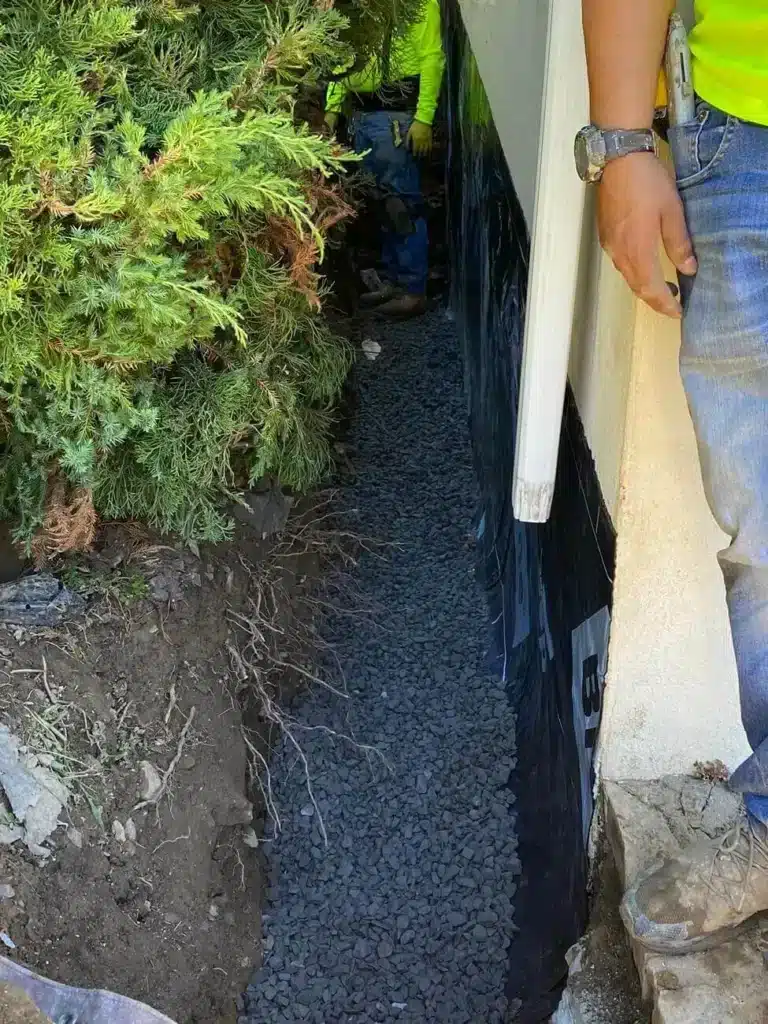Checking Out Various Approaches of Foundation Fixing for Different Dirt Kinds
Structure repair service is an important element of preserving structural honesty, especially when taking into consideration the varied challenges posed by different dirt types. The intricacy of dirt habits under differing conditions requires a tailored method to repair, guaranteeing optimal remedies such as helical piers for unstable dirts or chemical cements for natural layers. The question remains: exactly how do we establish the most efficient technique for each one-of-a-kind scenario? Comprehending the interplay between dirt features and repair work methods is critical, yet there is even more to reveal in the pursuit for sustainable options. What variables really dictate the option of approach?
Recognizing Soil Types
Soil kinds play a critical function in the stability and long life of building foundations, making it vital for homeowners and construction professionals to recognize their characteristics and habits. The interaction in between dirt and structure can identify the architectural integrity of a structure. There are numerous dirt kinds, each with distinct physical buildings that affect how structures are created and maintained.
Granular soils, such as sand and crushed rock, provide excellent drain and are frequently taken into consideration steady. In contrast, natural dirts like clays and silts exhibit various behaviors.
Rocky soils, recognized for their stamina and stability, deal outstanding assistance for structures however may call for specialized devices for excavation. On the other hand, fertile soils, which are a balanced blend of silt, sand, and clay, frequently give beneficial conditions for foundation assistance due to their moderate water drainage properties.

Recognizing these dirt kinds is crucial for choosing proper structure repair service techniques, making certain the durability and safety of structures in time.
Difficulties With Expansive Clay
Amongst the various dirt kinds, large clay offers one-of-a-kind challenges for structure stability because of its tendency to undertake significant quantity adjustments with dampness variant. This sort of soil swells when damp and contracts when completely dry, which can exert significant stress on structures. These changes can bring about structure splitting, heaving, and settlement concerns, posing substantial dangers to the architectural integrity of buildings.
The difficulties with extensive clay are aggravated by its plasticity index, which gauges the dirt's ability to transform form and volume. A high plasticity index suggests better potential for movement, increasing the chance of damages to structures. This is particularly problematic in areas experiencing extreme or frequent climate modifications, where cycles of wet and completely dry problems prevail.
In addition, the depth of extensive clay layers can differ, making complex the analysis and planning of appropriate foundation fixing techniques. These complexities require an extensive geotechnical evaluation to make sure efficient structure repair work methods are implemented, highlighting the significance of addressing large clay obstacles with know-how and care.
Solutions for Sandy Soils
Sandy soils, identified by their huge fragment size and reduced cohesion, existing distinctive obstacles for foundation security due to their propensity for shifting and erosion. These buildings necessitate specialized structure repair service strategies to ensure structural stability. One efficient option is using deep structure systems this contact form such as helical piers or driven stacks. By anchoring the foundation to much deeper, extra secure dirt layers, these systems can give the required support to combat the changing nature of sandy soils.
Another recommended method is the application of soil stablizing approaches. Chemical grouting, for instance, involves injecting a supporting agent right into the soil, which boosts cohesion and decreases leaks in the structure. This process assists to solidify the sandy substrate, thus minimizing the danger of erosion and motion.
Furthermore, setting up appropriate drain systems is vital in sandy soil problems. Making sure sufficient drainage can prevent water buildup around the structure, which usually exacerbates disintegration and soil displacement. Methods such as French drains pipes or surface grading can be used to route water far from the building perimeter.
Addressing Settling in Loamy Soils
Loamy soils, recognized for their well balanced mix of silt, sand, and clay, provide a productive base for numerous structures however can often lead to structure settling due to their unique composition. This balanced texture gives excellent drain and nutrient retention, making it perfect for agriculture and landscaping. Nonetheless, this exact same quality can end up being problematic for structures, as changes in moisture web content can create the soil to increase or contract, bring about settling.
Addressing clearing up in fertile soils calls for a diverse strategy. Exact dirt screening is critical to determine the specific composition and dampness content of the loam. As soon as information is gathered, executing appropriate drain remedies is necessary to preserve consistent moisture degrees, thereby minimizing the risk of dirt tightening or growth. French drains or surface grading work approaches to redirect water away from the structure.

Innovative Fixing Techniques
In the world of foundation fixing, innovative strategies are consistently being established to deal with the complex challenges positioned by different dirt problems. As dirt types differ significantly in their structural buildings, traditional approaches may not always suffice. The arrival of brand-new innovations in foundation fixing offers extra customized solutions, making sure security and longevity.
One significant innovation is the use of helical piers, which are specifically reliable in unpredictable or expansive dirts (foundation repair oklahoma city). These piers are screwed right into the ground till they reach a secure layer of soil, supplying solid support for the foundation over. This technique reduces disruption and is versatile to different soil kinds, making it a functional solution
An additional cutting-edge technique is the application of polyurethane foam injection. This technique includes injecting high-density polyurethane foam under the foundation to fill gaps and stabilize the structure. It is a less invasive alternative to conventional base, supplying quick installment with marginal disruption to the surrounding location.
Furthermore, dirt stabilization techniques, such as making use of chemical grouts, have gained traction. These compounds improve dirt strength and minimize leaks in the structure, stopping future moving. Jointly, these ingenious fixing methods supply efficient options for the varied challenges presented by differing dirt conditions.
Verdict

Foundation fixing is a crucial aspect of preserving architectural honesty, especially when considering the diverse difficulties positioned by various soil types (foundation repair okc). The complexity of dirt actions under varying problems necessitates a tailored approach to fix, making certain optimal solutions such as helical piers for unstable soils or chemical grouts for cohesive layers. By anchoring the foundation to deeper, much more steady soil layers, these systems can supply the necessary support to combat the moving nature of sandy soils
Foundation repair work needs cautious consideration of soil types to guarantee stability and longevity. Chemical grouts enhance dirt stamina and minimize leaks in the structure in natural dirts.